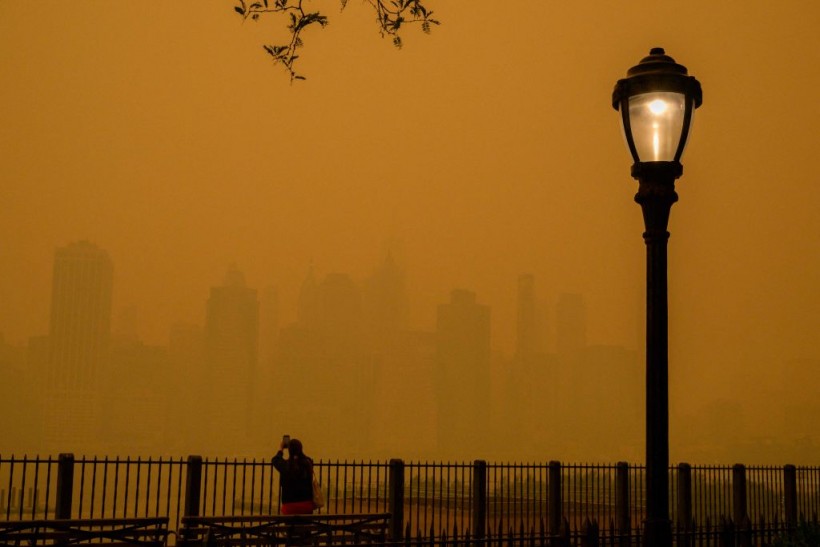Second-hand smoke has long been referred to as a major problem, especially when the smoke circulates indoors. However, air pollution from Canadaian wildfires could be more harmful to US citizens.
Air Pollution and Second-Hand Smoking
According to Newsweek, New York City has been affected by smoke coming from wildfires in Canada. The city's skies momentarily burned with orange hues, and the air could have become more damaging compared to indoor second-hand smoking.
The research was done by Rutgers University scientists, and they found that physicochemical and toxicological properties that come from wildfire smoke could do significant damage. As such, they compared its damage to being the equivalent of second-hand smoke in bars before some states banned indoor smoking.
Memo Cedeño Laurent, a Rutgers School of Public Health assistant professor, said that the Canada wildfires give a demonstration of how air quality can be impacted by climate change. Laurent was also the Rutgers Climate Adaptive and Restoration Environments (CARE) Lab director.
New York Air Pollution
New York and other cities on the east coast were affected by the smoke which started in early June. The smoke was heavy due to the many wildfires happening in Quebec, a province of Canada.
During the peak, between 3:00 p.m., and 7:00 p.m., on June 7, New York City had the worst air quality compared to other cities in the world. At that time, 330 micrograms per cubic meter in terms of PM2.5 or the average concentration of fine particulate matter.
The Department of Health describes PM2.5 as particle pollution from fine particulates, which is a measurement that determines whether air is unhealthy. Breathing in high levels of PM2.5 can place the person at risk of health problems stretching from asthma, heart disease, and even low birth weight.
Signs of unhealthy levels of PM2.5 include hazy air and reduced visibility. In fact, the World Health Organization's guidelines, via C40 Knowledge Hub, say that the safety limit of PM2.5 over a 24-hour period should only be at 15 micrograms per cubic meter.
Scale of Pollution
As mentioned by Newsweek, the average PM2.5 of New York City from its peak period was 330 micrograms per cubic meter, way above the recommended healthy level. PM2.5 particulates can include harmful particles like mineral dust, ammonia, black carbon, and sodium chloride among others.
The effects of this pollution could be itchiness in the eyes, lungs, nose, and throat while increasing the risk of respiratory infections. Nanoscoemce and Advanced Minerals Center (NAMC) researchers at Rutger's Environmental and Occupational Health Sciences Institute (EOHSI) also worked on the study.
Abbas Kanani, a Chemist Click Online Pharmacy pharmacist, gave a statement to Newsweek saying smoke inhalation from any source can have negative effects on one's health. However, comparing it to cigarettes can be tough because of the many variations, including the toxicity of different smoke types.
RELATED ARTICLE: Rhodes Island Fires Push 30,000 People To Move to Safety Amid Record-Breaking Heat Wave
Check out more news and information on Environment and Climate in Science Times.















